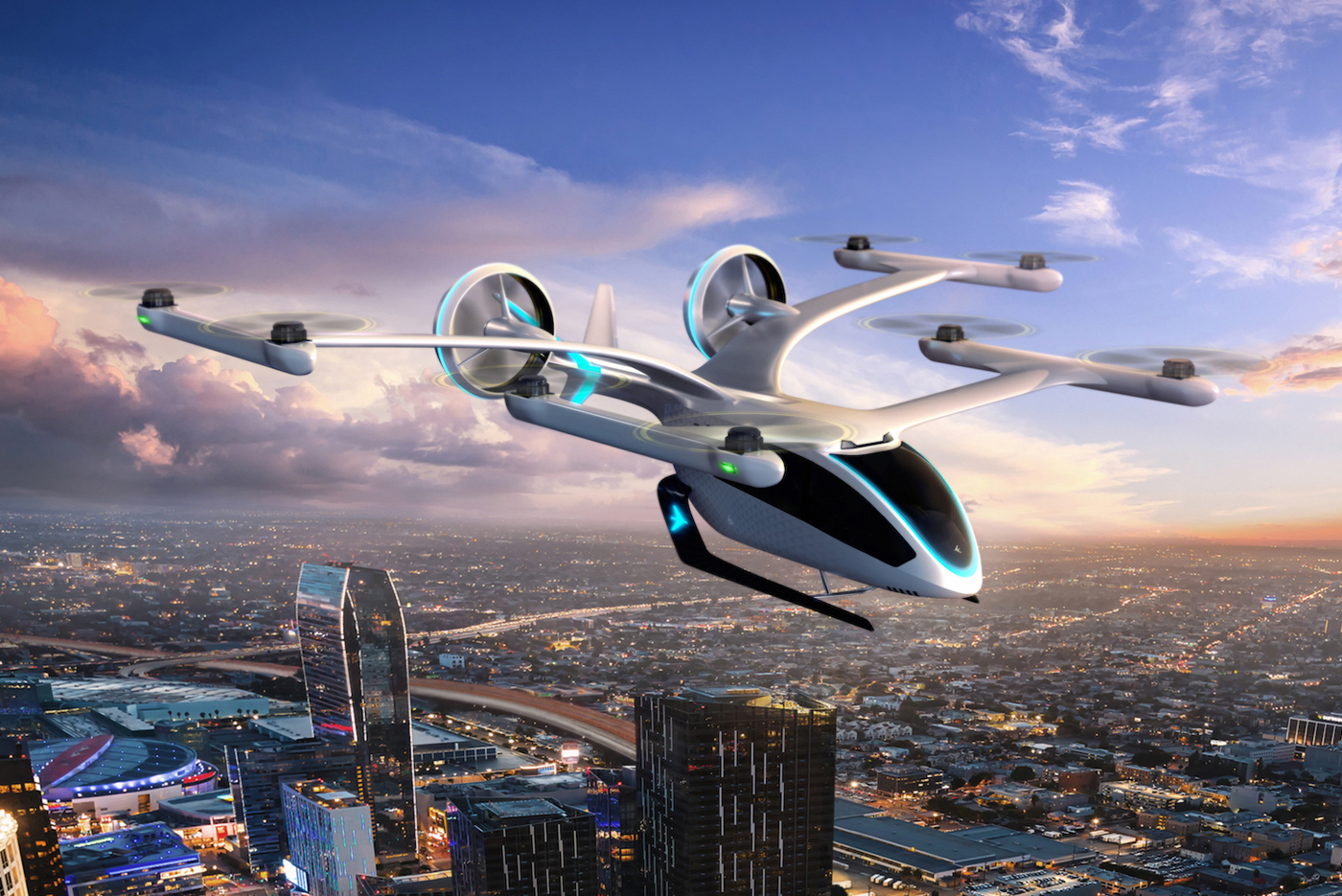Technological Innovations to Boost Market for eVTOL in 2022
One of the most recent developments in the aerospace industry is Electric Vertical Take-Off and Landing (eVTOL). These vehicles are electric aircraft that operate similarly to drones. Large omnidirectional fans assist the aircraft in moving in any direction and even vertically taking off. While each developer’s design is unique, most appear to be in the shape of a drone.
It represents the next generation of travel management that is safe, quiet, and environment-friendly as well as powered by electricity. Rising awareness toward the need to reduce one’s carbon footprint, lower aircraft operating costs, and increase the demand for urban air mobility are all surging demand for this technology.
Fortune Business Insights™ reports that the market for eVTOL stood at USD 1.11 billion in 2020. The market value is slated to rise from USD 5.41 billion in 2021 to USD 23.21 billion in 2028, registering a CAGR of 23.13% during 2021-2028.
EV Take-off and Landing – Making Urban Air Mobility Smarter, More Reliable, and Efficient
Emerging economics, such as China, Japan, India, and South Korea, have witnessed a notable uptick in population growth, leading to rapid urbanization. The subsequent traffic congestion being a major challenge in urban areas has created a strong need for smarter transportation. As a result, advanced concepts, such as urban air mobility and air taxi services, have garnered significant momentum over the past several years. Therefore, these vehicles could prove to be a highly feasible technology for urban environments.
Major players, such as Airbus S.A.S, Beta Technologies, Bell Textron Inc., Urban Aeronautics Ltd., and Kitty Hawk, have been continuously developing and testing new eVTOL aircraft prototypes. The widespread commercialization of air taxis in the coming years could brighten the market prospects over the forthcoming years.
COVID-19 Pandemic – A Challenging Period for the Industry
Due to supply chain disruptions and the closure of research & development facilities, the COVID-19 outbreak had a negative impact on the market in 2020. During the pandemic, Asia Pacific startups suffered massive losses. Despite the impact of COVID-19, major corporations in North America and Europe raised nearly USD 1.3 billion in investment in air mobility companies, according to data provider firm Pitchbook. By the end of 2021, the market made significant recovery. Continuous R&D and growing advances in eVTOL technology will create a favorable outlook for the market in the forthcoming years.
Advanced Detection and Collision Avoidance System to Experience Robust Demand
As technology advances in electric vertical take-off and landing aircraft design, there is a greater need to address technological barriers in the eVTOL concept. Multiple manufacturers are investing in the development of advanced devices such as spatial awareness systems, collision detection, avoidance systems, and so on. For example, Sagetech Avionics Inc. designed a range of certifiable detection and avoidance systems along with new situational awareness platforms to support urban air mobility.
Advanced detection and collision avoidance systems employ micro or millimeter wave technology to enable accurate identification and real-time decision support in hazardous operating environments. Despite rapid progress in the field, strictly enforced certification protocols and rising commercialization demand for electric vertical take-off and landing aircraft are expected to fuel the advancement of these solutions for better passenger safety.
Aircraft Makers are Continuously Funding New EV Take-off and Landing Development Projects
Investments in eVTOL development programs are gathering pace as prominent players, such as Airbus, Boeing, and Bell Helicopter, adopt the technology. Additionally, leading aerospace suppliers, such as Honeywell International, Raytheon Technologies, GE Aviation, and Rolls Royce, are also investing in eVTOL-related technologies such as hybrid-electric powertrain and electric motors.
The industry is also witnessing the entry of automotive giants, such as Hyundai, Toyota, and Daimler, who have invested in projects and are collaborating with major market players to accelerate research & development in the space. Highlighting a recent instance, in January 2020, Toyota invested nearly USD 400 million in a startup, Joby Aviation, to ramp up R&D efforts and product innovation.
While automakers and aviation giants look to expand their footprint in the market, manufacturers of composite materials, such as Toray Advanced Composites and Hexcel Corporation, are collaborating with aerospace OEMs to design advanced lightweight materials that can be used in different components and facets in EV take-off and landing carriers. Therefore, robust investments from various end-use verticals will provide lucrative growth opportunities to the market.
About the author:
Hrishikesh Kadam is a graduate in Electronics & Telecommunication Engineering and is passionate about penning down quality content for a range of domains. Besides writing, he enjoys Netflix, good music, and working out.











